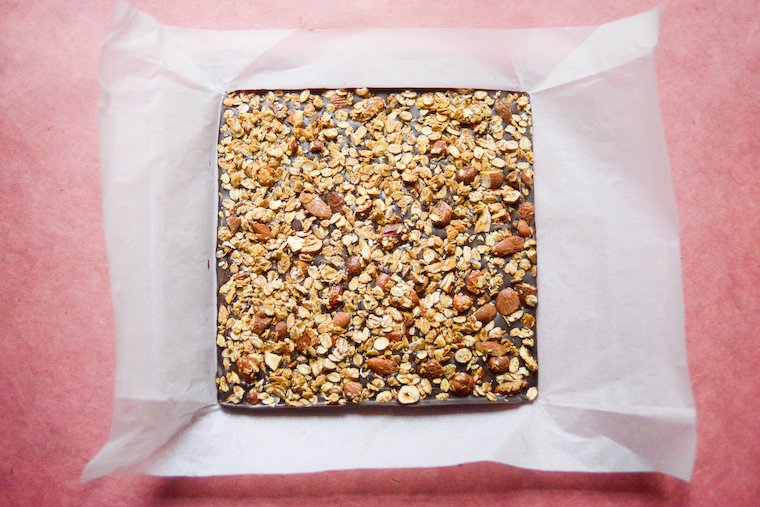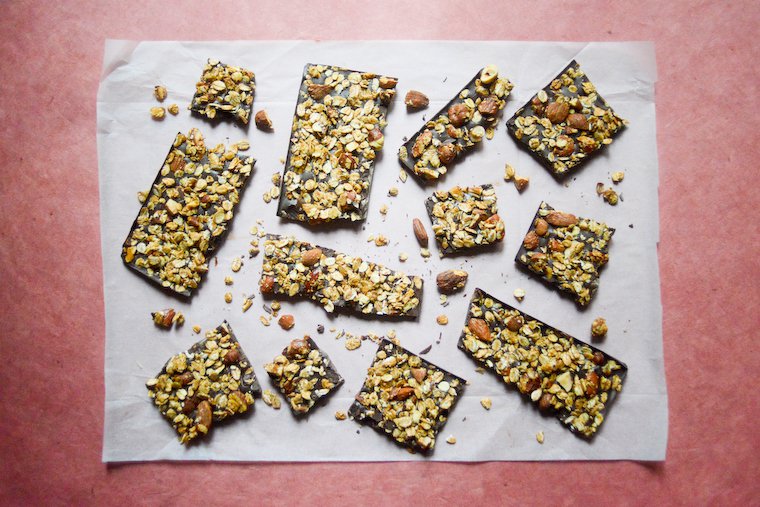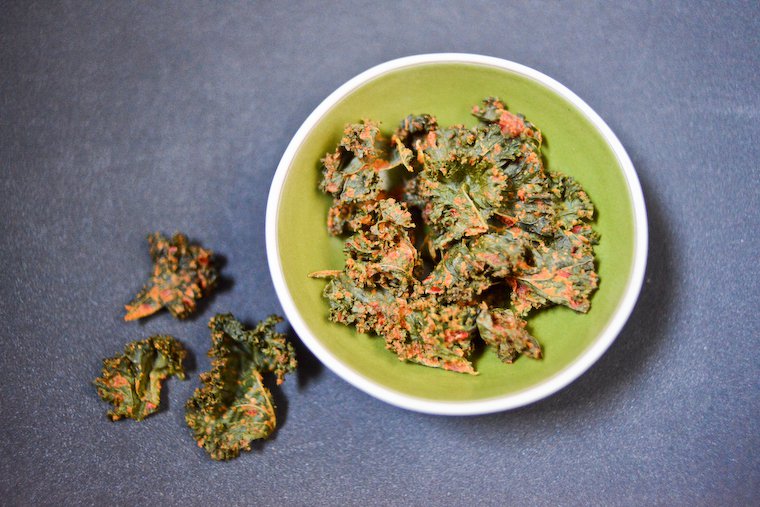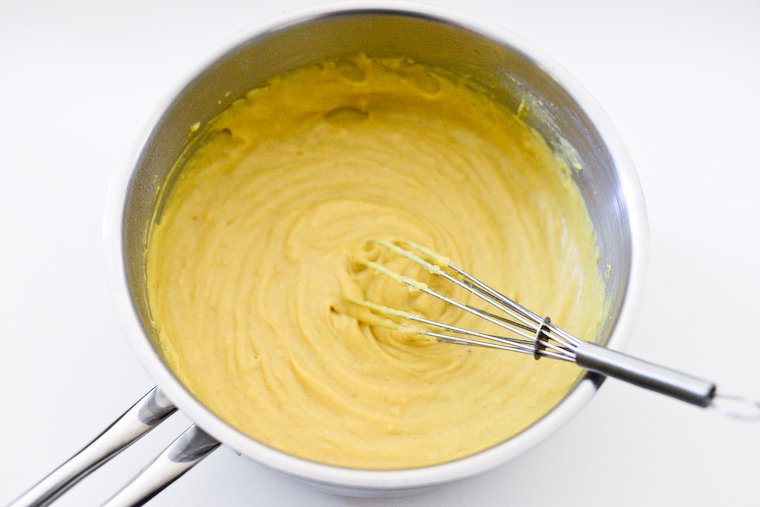I have been dreaming about something like this for a long time, inspired both by the nut-studded chocolate bars one finds at good chocolate shops in Paris — such as the one that’s on our desktop calendar for this month — and by the tradition of chocolat au couteau, or knife-cut chocolate, a generous slab of chocolate that is broken into smaller chunks for sale by the weight.
The two ideas merged into this chocolate bar, whose surface is covered with a nicely toasted, nutty granola spiked with a healthy amount of sea salt and some freshly grated cinnamon.
I find the concept of rough-cut chocolate curiously enticing, and have often snacked on a handful of granola with a side square of dark chocolate. Somehow the two ideas merged into this chocolate bar, whose surface is covered with a nicely toasted, nutty granola spiked with a healthy amount of sea salt and some freshly grated cinnamon.
And not just any cinnamon: I recently received a sample of the new cinnamon harvest from my partner Cinnamon Hill, a small British company I love that imports top-quality cinnamon sticks grown in Vietnam and Sri Lanka, and every time I use their stuff in my cooking and my baking, I am reminded of the stark difference freshness makes — it’s just not the same spice at all.
I was so smitten with the cinnamon sticks and the gorgeous wooden grater they initially sent me that I bought the cinnamon lover’s pack for my mother for Christmas last year. And now they’ve created a lower-price, injection-molded version of that grater, based on the original design, with an identical grater blade, and also manufactured in the UK (not China!), which makes it an even more affordable gift option for the baker who has everything.

Cinnamon Graters from Cinnamon Hill
These cinnamon granola chocolate bars are the perfect recipe to dip your toes in the homemade chocolate pool if you’ve been wanting to try it this holiday season, giving you a great but low-risk opportunity to temper chocolate. Tempering chocolate means bringing it to three different temperature levels (high, low, medium) to control the crystallization of the cacao butter, and it translates to a chocolate that is glossy when set (as opposed to matte with white marbling), and breaks off with a clean, satisfying snap.
My plan for my inaugural batch of granola chocolate bar is to just nibble my way through it, bit by bit and chunk by chunk, but I ambition to make more, package it up, and give it away as an edible gift.
This is a process all chocolatiers apply to their chocolate and it may sound a little intimidating at first, but it is a lot less fiddly than it sounds and the result is plenty worth the effort. It does require a digital thermometer with a probe, so if you don’t have one or it just sounds like too much of a project, I’ve included instructions to skip that step.
My plan for my inaugural batch of granola chocolate bar is to just nibble my way through it, bit by bit and chunk by chunk, but I ambition to make more, package it up, and give it away as an edible gift. I can also imagine how charming it will be to bring this on a small platter when I have guests over for coffee during the holidays, with a few chunks broken off and a parmesan knife for chocolate enthusiasts to help themselves to more.
PS: How to taste chocolate, my favorite Christmas cookies, and easy candied nuts.











